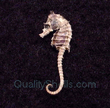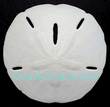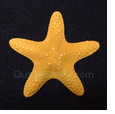Where do Seashells come from? |
Site NavigationHome PageArticles Where do shells come from? Is seawater similar to blood? Picking up seashells What are starfish? Do sharks have skeletons? What are sand dollars? What are seahorses? What are "flying fish"? How navigate on the ocean? More legs than an Octopus? Fish training Can I drink seawater? Additional Resources Seashell Identification Guide Conchologists of America Waikiki Seashells Training Fish Featured Products Marine GPS with MOB Key Privacy Policy Page Contact Us |
Where do seashells come from? Seashells are the external skeletons of a class of marine animals called Mollusks. Where people have our skeletons on the inside of our bodies, mollusks have theirs on the outside of theirs. This way they help protect the creatures from predators, strong currents and storms, help camouflage the animal, and do many other things. Seashells are primarily made of calcium, a hard mineral, as our own bones are. "Marine" means having to do with the ocean -- in this case it means the animals live in seawater, in one of the world's the oceans. When a mollusk dies, its shell is left behind, just as land animals leave their skeletons behind. Sometimes the shell is taken and used as a home by other sea creatures, such as hermit crabs. When a hermit crab outgrows the shell it has borrowed, it abandons it and finds a larger one to use. Mollusks are divided into many types, but the two major ones are bivalves and univalves. These names are derived from Latin words, where "Bi" means "two" -- which we see in words like "bicycles" (two wheels) and "bipeds" (animals that walk on two legs). "Uni" means "one" -- for example the word "unicycle" which means it has just one wheel. So bivalves are mollusks that have two shell halves that form a whole shell. Examples would be clams and oysters. Most mollusks are bivalves. Univalves just have a one-piece shell, usually a spiral-type shell, often looking something like a larger, stronger and more elaborate snail's shell. Examples of univalves would be conch, whelks, nautilus and similar shells. After the animal that created the seashell dies, the shell often washes up onto the shore, or remains in the tide pool where the creature lived. Sometimes other creatures such as small hermit crabs then take the empty shell and use it as their home. |
 Murex Ramosus Seashell  Seahorse  Sand Dollar  Pearl Nautilus Seashell -- Split  Jungle Starfish  Lambis Chiragra Spider Conch Seashell |